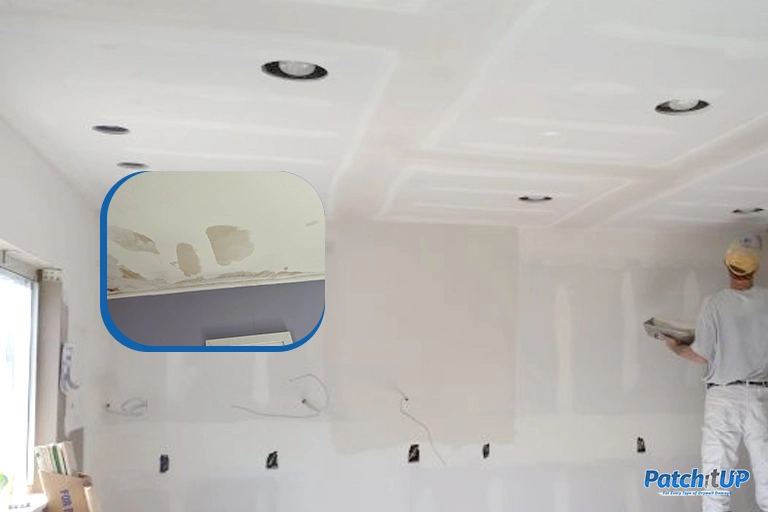Welcome to the indispensable manual for avoiding typical mistakes when repairing exterior plasterboard. The outside of your house makes a memorable first impression, so we’re here to help you avoid common mistakes and ensure your repairs turn out flawlessly. In this in-depth analysis, we’ll delve into the nuances of external plasterboard restoration, emphasizing doable precautions to avoid errors that could jeopardize the structure’s integrity and appearance.
Our advice is designed to make the process of repairing damage go smoothly and successfully, from identifying the underlying causes of damage to choosing the best materials and perfecting the sealing technique. With an emphasis on approachable language and a personal touch, this guide seeks to equip you with the information needed to change the outside of your house. Let’s bid farewell to typical mistakes and embrace the wisdom of weather-appropriate repairs. Together, we can achieve a completely restored and long-lasting exterior.
1. Neglecting Root Causes: Addressing Underlying Issues
Mistake: Initiating exterior drywall repairs without understanding the root cause can lead to recurring issues. Ignoring water leaks, poor drainage, or structural problems sets the stage for continuous damage, undermining the efficacy of your repair efforts.
Solution:
- Thorough Inspection: Conduct a meticulous examination of the damaged area to identify the primary cause of the drywall issues.
- Address Water Issues: Prioritize fixing any leaks or drainage problems before commencing the repair process.
- Structural Assessment: Investigate for any underlying structural issues that might compromise the effectiveness of the repair.
2. Material Selection Matters: Choosing the Right Components
Mistake: Using inappropriate materials for exterior drywall repairs can result in premature deterioration. Opting for interior-grade drywall or unsuitable joint compounds compromises the repair’s durability.
Solution:
- Exterior-Grade Drywall: Invest in materials explicitly designed for exterior use to withstand weather elements.
- Moisture-Resistant Compounds: Choose joint compounds resistant to moisture to prevent premature degradation.
- Quality Paint and Primer: Select high-quality exterior paint and primer to enhance the longevity of the repair.
3. Sealing for Success: Importance of Proper Waterproofing
Mistake: Neglecting to seal the repaired drywall properly exposes it to water infiltration, leading to further damage. Insufficient sealing can compromise the structural integrity of the repair.
Solution:
- Weather-Resistant Caulking: Seal seams and joints with a reliable exterior caulking to prevent water penetration.
- High-Quality Primer: Apply a primer designed for exterior use to create a robust barrier against moisture.
- Suitable Exterior Paint: Choose a paint specifically formulated for outdoor applications to provide an additional layer of protection.
4. Prep Work Precision: Cleaning and Surface Preparation
Mistake: Skipping essential surface preparation steps like cleaning and sanding can result in poor adhesion and an uneven finish. Neglecting prep work compromises the aesthetics and longevity of the repair.
Solution:
- Thorough Cleaning: Remove debris and clean the damaged area meticulously before initiating repairs.
- Sanding for Smoothness: Prioritize sanding to create an even and smooth substrate for the repair.
- Surface Inspection: Ensure the surface is free from any loose or damaged material before applying any repairs.
5. Weather Wisdom: Choosing the Right Conditions for Repairs
Mistake: Performing exterior drywall repairs in unfavorable weather conditions can compromise the quality of the repair. Inadequate drying times can lead to premature failure and a compromised finish.
Solution:
- Ideal Weather Conditions: Plan repairs on dry days with moderate temperatures to ensure optimal drying and curing.
- Patience during Drying: Allow sufficient time for primers, joint compounds, and paint to dry between coats to ensure a durable and lasting repair.
- Weather Monitoring: Stay updated on weather forecasts to choose the most suitable conditions for your exterior drywall repair project.
At PatchitUP, we’re dedicated to offering top-notch drywall solutions in Nassau County, NY. Our commitment to excellence, meticulous craftsmanship, and personalized care have positioned us as the go-to choice for those seeking top-tier drywall repair and installation services. Let’s delve into the core aspects that define PatchitUP.
Final Thoughts:
In conclusion, ensuring a successful exterior drywall repair project requires attention to detail and adherence to best practices. By avoiding common mistakes such as neglecting root causes, using inappropriate materials, inadequate sealing, skipping prep work, and choosing unfavorable weather conditions, homeowners can achieve a flawless repair that enhances both the appearance and structural integrity of their homes. With the guidance provided in this manual and the expertise of professionals like PatchitUP, homeowners can confidently tackle exterior drywall repairs and enjoy long-lasting results.
FAQ’s
Q: What are some common mistakes to avoid when repairing exterior plasterboard?
A: Neglecting root causes, using inappropriate materials, inadequate sealing, skipping prep work, and choosing unfavorable weather conditions for repairs are common mistakes to avoid.
Q: How can one address underlying issues before initiating exterior drywall repairs?
A: Conduct a thorough inspection to identify the primary cause of the drywall issues, prioritize fixing any leaks or drainage problems, and investigate underlying structural issues.
Q: What materials should be used for exterior drywall repairs?
A: Invest in exterior-grade drywall, moisture-resistant joint compounds, and high-quality exterior paint and primer to ensure the durability and longevity of the repair.
Q: Why is proper waterproofing essential for exterior drywall repairs?
A: Proper sealing with weather-resistant caulking, high-quality primer, and suitable exterior paint prevents water infiltration, which can compromise the structural integrity of the repair.
Q: What are some essential surface preparation steps before initiating exterior drywall repairs?
A: Thoroughly clean the damaged area, prioritize sanding for smoothness, and ensure the surface is free from any loose or damaged material before applying repairs.
Q: Why is it important to choose the right weather conditions for exterior drywall repairs?
A: Performing repairs on dry days with moderate temperatures ensures optimal drying and curing, preventing premature failure and ensuring a durable finish.


Leave a Reply